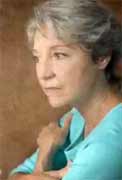
THURSDAY, Aug. 13, 2015 (HealthDay News) — The weakening bones of osteoporosis greatly raise a person’s odds for dangerous fractures, and a new report finds that one-quarter of all American women aged 65 or older suffer from the condition.
Close to 6 percent of men in this age group also have osteoporosis, according to the report from the U.S. Centers for Disease Control and Prevention.
Experts weren’t surprised, and said more must be done to test for and treat the loss of bone density that often comes with age.
Osteoporosis and its precursor condition — osteopenia (low bone mass) — “is not just a problem for the 80-year-old individual, but starts to become an issue for many adults in their 50s and 60s,” said Dr. Saad Chaudhary, a spine surgeon at Mount Sinai Beth Israel Hospital in New York City.
In the study, Anne Looker and Steven Frenk, of the CDC’s Division of Health and Nutrition Examination Statistics, examined 2005-2010 data from a major federal government health survey.
The investigators reported that more than 16 percent of all American seniors — about 25 percent of women and nearly 6 percent of men — have full-blown osteoporosis as evidenced on bone density tests of the spine and hip.
The numbers rise even higher when the data involves osteopenia, where bone loss is already apparent but hasn’t reached the stage of osteoporosis. In that case, almost half (48 percent) of seniors — more than 52 percent of women and 44 percent of men — had osteopenia, the data showed.
Of course, rates of osteoporosis rose with age — about 26 percent of adults aged 80 or older had the condition. But the CDC team also noted that almost 13 percent of all adults between 65 and 79 years of age had osteoporotic bones.
In terms of demographics, Mexican-American seniors had the highest rate of osteoporosis (almost 25 percent), while blacks had the lowest rate (a little more than 10 percent), the report found.
Chaudhary stressed that much of this bone loss could be prevented.
“We reach our peak bone mineral density in adolescence and then must work conscientiously to maintain that through activity, a balanced diet, and consultation with health care providers,” he said.
Neglect your bone health in youth, and the consequences to quality of life could be significant, Chaudhary added. “Osteoporosis is the more severe stage and can often result in one or more fractures of the spine and cause pain and disability,” he said.
“Bone mineral density screening is recommended for postmenopausal women, and men aged 50 and above based on their risk factor profiles, or for all women age 70 and above and men aged 80 and above,” Chaudhary said. He believes that diet is also important — especially intake of calcium and vitamin D, which work together to help strengthen bones.
Dr. Caroline Messer directs the Center for Pituitary and Neuro-Endocrine Disorders at Lenox Hill Hospital in New York City. She noted the “unexpectedly high percentage of men over 65 with osteopenia.”
While current guidelines don’t recommend routine bone density testing for men younger than 80, “based on this new data, perhaps males aged 65 or over should also be considered for routine testing,” Messer said.
The report was released Aug. 13 by the CDC’s National Center for Health Statistics.
More information
Find out more about bone loss at the National Osteoporosis Foundation.
Copyright © 2025 HealthDay. All rights reserved.

